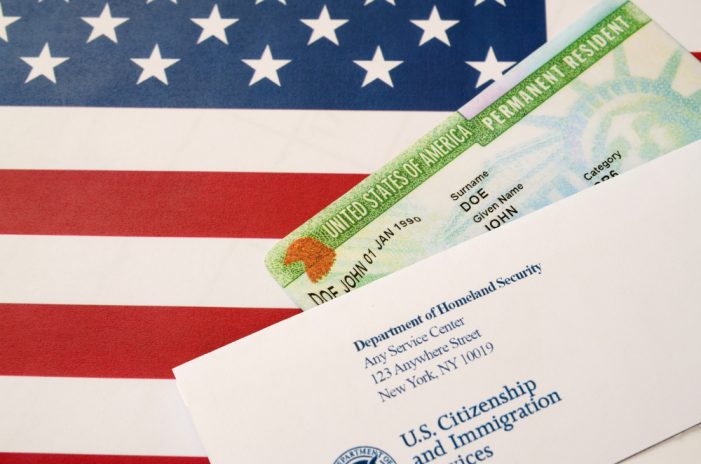By Brian Figeroux, Esq.
For Green Card holders who are entrepreneurs, entertainers, or professionals with international commitments, the path to U.S. citizenship involves unique challenges. Frequent travel and extended stays abroad can complicate the naturalization process, particularly concerning residency requirements and tax obligations. This guide provides a detailed roadmap to help such individuals understand and navigate the complexities of becoming a U.S. citizen.
Part 1: Understanding the Naturalization Process
Step 1: Determine Eligibility
To apply for U.S. citizenship through naturalization, you must meet the following criteria:
- Age: Be at least 18 years old at the time of filing Form N-400.
- Lawful Permanent Resident (LPR) Status: Hold a Green Card for at least 5 years (or 3 years if married to a U.S. citizen).
- Continuous Residence: Reside continuously in the U.S. for 5 years immediately preceding the application.
- Physical Presence: Be physically present in the U.S. for at least 30 months out of the 5 years.
- Good Moral Character: Demonstrate good moral character during the statutory period.
- English and Civics Knowledge: Possess the ability to read, write, and speak basic English and have knowledge of U.S. history and government.
- Oath of Allegiance: Be willing to take the Oath of Allegiance to the United States.
Step 2: Prepare and Submit Form N-400
Form N-400 is the Application for Naturalization. When completing this form, ensure you provide accurate information about your travel history, employment, and any absences from the U.S. It’s crucial to disclose all trips abroad, especially those lasting six months or more.
Step 3: Attend Biometrics Appointment
After submitting Form N-400, you’ll receive a notice for a biometrics appointment. During this appointment, the U.S. Citizenship and Immigration Services (USCIS) will collect your fingerprints, photograph, and signature for background checks.
Step 4: Complete the Interview and Tests
USCIS will schedule an interview where an officer will review your application and ask questions about your background. You’ll also take the English and civics tests unless you qualify for an exemption.
Step 5: Receive a Decision
After the interview, USCIS will provide a decision: approval, continuation (if additional information is needed), or denial.
Step 6: Take the Oath of Allegiance
If approved, you’ll attend a naturalization ceremony to take the Oath of Allegiance, officially becoming a U.S. citizen.
Part 2: Tax Obligations for Green Card Holders Abroad
Worldwide Income Reporting
As a Green Card holder, you’re considered a U.S. tax resident, which means you’re required to report and pay taxes on your worldwide income, regardless of where you live or earn income. This includes income from foreign businesses, investments, and employment.
Filing Requirements
- Form 1040: File annually to report your income.
- Foreign Bank Accounts: If you have foreign financial accounts exceeding certain thresholds, you must file the Report of Foreign Bank and Financial Accounts (FBAR) and possibly Form 8938 under the Foreign Account Tax Compliance Act (FATCA).
Tax Treaties and Credits
To avoid double taxation, you can utilize:
- Foreign Tax Credit (FTC): Claim credits for taxes paid to foreign governments.
- Foreign Earned Income Exclusion (FEIE): Exclude a portion of your foreign-earned income if you meet specific requirements.
Importance of Compliance
Failing to meet tax obligations can have serious consequences, including penalties and jeopardizing your eligibility for naturalization. USCIS considers tax compliance as part of the good moral character requirement.
Part 3: Challenges of Frequent Travel and Extended Absences
Continuous Residence Requirement
USCIS requires that you maintain continuous residence in the U.S. for the statutory period. Absences of more than six months but less than one year can disrupt this continuity unless you can prove otherwise. Absences of one year or more almost always break the continuous residence requirement.
Physical Presence Requirement
You must be physically present in the U.S. for at least 30 months out of the 5 years before applying. Frequent travel can make it challenging to meet this requirement.
Risk of Abandoning LPR Status
Extended stays abroad can lead USCIS to determine that you’ve abandoned your LPR status, especially if you don’t maintain ties to the U.S. or fail to file taxes appropriately.
Part 4: Strategies to Address Travel-Related Challenges
Reentry Permits
Before undertaking trips abroad lasting more than a year, apply for a reentry permit using Form I-131. This permit demonstrates your intent to return and helps maintain your LPR status.
Documenting Ties to the U.S.
Maintain strong ties to the U.S. by:
- Keeping a U.S. residence.
- Maintaining U.S. bank accounts and credit cards.
- Filing U.S. tax returns annually.
- Retaining a U.S. driver’s license.
Legal Assistance
Consult with an immigration attorney to assess your specific situation, especially if you’ve had extended absences or complex travel histories. They can help you present evidence to USCIS demonstrating your continuous residence and intent to maintain LPR status.
Conclusion
For Green Card holders with international careers, achieving U.S. citizenship requires careful planning and adherence to immigration and tax laws. By understanding the naturalization process, fulfilling tax obligations, and proactively addressing the challenges of frequent travel, you can navigate the path to citizenship successfully. Always consider seeking professional legal and tax advice tailored to your unique circumstances to ensure compliance and a smooth naturalization journey.

